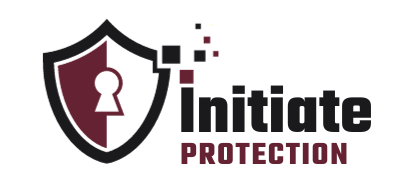Your digital identity is at risk. With increasing cyber threats and data breaches, safeguarding your online presence has become crucial. This article offers valuable tips and tricks to help protect your digital identity and ensure peace of mind. Don’t wait until it’s too late, take control of your online security now.
What Is Digital Identity?
Digital identity is the collection of information that represents an individual or entity on the internet. It encompasses a person’s entire online presence, including their usernames, email addresses, social media profiles, and other digital footprints. This digital identity is what enables individuals to participate in various online activities, such as shopping, banking, and socializing.
It is crucial to safeguard one’s digital identity to prevent identity theft, fraud, and other cybercrimes. This can be achieved by using strong passwords, implementing two-factor authentication, being cautious when sharing personal information online, and regularly updating security software.
Why Is It Important to Protect Your Digital Identity?
In today’s digital age, safeguarding your digital identity is crucial. With the increase in cybercrimes, it is essential to protect your personal information. By doing so, you prevent unauthorized access to sensitive data, including financial information, social media accounts, and personal documents. This not only helps prevent identity theft, fraud, and other cyber threats, but also ensures that your online reputation remains intact. Compromised digital identities can lead to reputational damage.
To minimize the risk of digital identity theft, it is important to implement strong passwords, enable two-factor authentication, and be cautious when sharing personal information online.
How Can Your Digital Identity Be Compromised?
In today’s digital age, our personal information is constantly at risk of being compromised. In this section, we will discuss some of the most common ways in which your digital identity can be compromised. From falling victim to phishing scams to having your accounts hacked, we will cover the various methods used by cybercriminals to access your personal information. We will also explore the dangers of social engineering and how it can put your digital identity in jeopardy. By understanding these threats, we can better protect ourselves and our digital identities.
1. Phishing Scams
Phishing scams are fraudulent attempts to obtain sensitive information such as usernames, passwords, and credit card details. To protect yourself from phishing scams, follow these steps:
- Be cautious of unsolicited emails or messages asking for personal information.
- Verify the sender’s identity before providing any sensitive information.
- Avoid clicking on suspicious links or downloading attachments from unknown sources.
- Keep your computer and antivirus software up to date to prevent malware attacks.
- Educate yourself about common phishing techniques to recognize and avoid them.
Remember, staying vigilant and taking necessary precautions is essential to safeguard your digital identity from phishing scams.
2. Hacking
Hacking is a serious threat to your digital identity and can lead to various forms of cybercrime. To protect yourself from hacking, consider the following steps:
- Keep your software and devices up to date with the latest security patches.
- Use strong and unique passwords for all your accounts.
- Enable two-factor authentication whenever possible.
- Be cautious of suspicious emails or messages and avoid clicking on unknown links.
- Regularly back up your data to prevent permanent loss.
Implementing these steps can significantly reduce the risk of hacking and protect your digital identity.
3. Social Engineering
Social engineering is a common method used by cybercriminals to manipulate individuals into revealing sensitive information or performing actions that may compromise their digital identity. To protect yourself from these attacks, follow these steps:
- Be skeptical of unsolicited communications, such as emails or phone calls, asking for personal information or account credentials.
- Verify the identity of the person or organization before sharing any sensitive information.
- Avoid clicking on suspicious links or downloading attachments from unknown sources.
- Regularly update your privacy settings on social media platforms and limit the amount of personal information you share online.
- Educate yourself about common social engineering techniques and stay informed about new tactics.
By being cautious and vigilant, you can significantly reduce the risk of falling victim to social engineering attacks and protect your digital identity.
What Are the Signs That Your Digital Identity Has Been Compromised?
As we navigate the digital world, protecting our personal information and digital identity has become more important than ever. But how do you know if your digital identity has been compromised? In this section, we will discuss the tell-tale signs that your personal information may have been accessed without your consent. From unusual activity on your accounts to suspicious emails or messages, being aware of these signs can help you take action to protect your digital identity.
1. Unusual Activity on Your Accounts
Unusual activity on your accounts can be a warning sign that your digital identity may have been compromised. To safeguard yourself, please follow these steps:
- Regularly monitor your accounts to identify any abnormal activity.
- If you discover any unauthorized transactions or charges, immediately contact your financial institutions.
- Change the passwords for all impacted accounts to prevent further unauthorized access.
- Report the incident to the appropriate authorities, such as the police or cybercrime agencies.
- Consider implementing additional security measures, such as enabling two-factor authentication or using a virtual private network.
2. Unauthorized Charges or Transactions
Unauthorized charges or transactions are often a clear indication of a compromised digital identity. If you come across any unexplained charges or transactions on your accounts, it is crucial to take immediate action to safeguard yourself. Contact your financial institutions to report the unauthorized activity and freeze your accounts, if needed. Keep records of all communication and file a complaint with the relevant authorities. Regularly review your financial statements and monitor your accounts for any unusual or unexpected activity. By remaining vigilant and taking swift action, you can reduce the impact of unauthorized charges or transactions.
3. Receiving Suspicious Emails or Messages
Receiving suspicious emails or messages is a common way your digital identity can be compromised. To protect yourself, follow these steps:
- Be cautious: Avoid opening emails or messages from unknown senders or those that seem suspicious.
- Check for red flags: Look for spelling or grammatical errors, requests for personal information, or urgent and threatening language.
- Don’t click on links: Avoid clicking on links or downloading attachments from emails or messages that seem suspicious.
- Verify the source: If you receive an email or message from a trusted organization, contact them directly to confirm its legitimacy.
- Report and delete: If you receive a suspicious email or message, report it to your email provider or the appropriate authorities, and delete it immediately.
What Are Some Tips for Protecting Your Digital Identity?
In today’s digital age, protecting your personal information and digital identity is more important than ever. So, what are some effective ways to safeguard your online presence? In this section, we’ll discuss a variety of tips and tricks to help you protect your digital identity. From using strong and unique passwords to utilizing a virtual private network, we’ll cover everything you need to know to keep your personal information secure. Let’s dive in.
1. Use Strong and Unique Passwords
Using strong and unique passwords is crucial for protecting your digital identity. Here are some steps to follow:
- Create complex passwords: Use a combination of uppercase and lowercase letters, numbers, and special characters to ensure strong and unique passwords.
- Avoid using personal information: Don’t include your name, birthdate, or other easily identifiable information in your passwords to further strengthen their uniqueness.
- Use different passwords for each account: This ensures that if one account is compromised, the others remain secure and your digital identity is protected.
- Consider using a password manager: These tools generate and store strong passwords, making it easier to manage multiple accounts and maintain their uniqueness.
- Regularly update passwords: Change your passwords periodically to minimize the risk of unauthorized access and keep your digital identity secure.
2. Enable Two-Factor Authentication
Enabling two-factor authentication is a crucial step in safeguarding your digital identity from unauthorized access.
- Navigate to your account settings and locate the option for two-factor authentication (2FA).
- Select your preferred method for receiving authentication codes, such as through an app or text message.
- Follow the prompts to link your chosen method with your account.
- Once set up, every time you log in, you will be required to enter a unique code.
- The code will be generated by the 2FA method you have chosen.
- Enter the code to confirm your identity and gain access to your account.
- This added layer of security significantly increases the difficulty for hackers to gain unauthorized access to your account.
3. Be Cautious of What You Share Online
When it comes to protecting your digital identity, it is crucial to be cautious of what you share online. Here are some steps to follow:
- Think before you share: Consider the potential consequences of sharing personal information online.
- Limit personal details: Avoid sharing sensitive information like your full address, phone number, or social security number.
- Review privacy settings: Regularly check and adjust the privacy settings on your social media accounts and other online platforms.
- Avoid oversharing: Be mindful of what you post on social media and avoid sharing too much personal information.
- Be cautious of online quizzes and surveys: These can often collect personal data that can be used for identity theft.
4. Regularly Monitor Your Accounts
Regularly monitoring your accounts is essential for safeguarding your digital identity. To ensure your accounts are secure, follow these steps:
- Set up account alerts: Enable notifications for any unusual activity or changes in your accounts.
- Review account statements: Regularly check your bank statements, credit card bills, and other financial records for any suspicious transactions.
- Monitor login activity: Keep an eye on your login history to detect any unauthorized access to your accounts.
- Check for unusual emails or messages: Be cautious of phishing attempts and carefully review any suspicious emails or messages you receive.
- Monitor social media activity: Regularly review your social media accounts for any unusual posts, tagging, or friend requests.
By regularly monitoring your accounts, you can quickly identify and address any potential compromises to your digital identity.
5. Use a Virtual Private Network
Using a virtual private network (VPN) is an effective way to protect your digital identity. Follow these steps to ensure maximum security:
- Choose a reputable VPN provider that offers strong encryption and a no-log policy.
- Install the VPN software on your device and follow the setup instructions.
- Connect to a VPN server of your choice to establish a secure and encrypted connection.
- Make sure to activate your VPN whenever you access the internet.
- Verify that your IP address is masked and your internet traffic is encrypted.
By using a VPN, your online activities remain private and secure, safeguarding your digital identity from potential threats.
What Should You Do if Your Digital Identity Is Compromised?
In today’s digital age, protecting our online identity is crucial. However, despite our best efforts, it is still possible for our digital identities to be compromised. In this section, we will discuss the necessary steps to take if you find yourself in this unfortunate situation. From changing your passwords to contacting your financial institutions, and filing a complaint with the appropriate authorities, we will cover the essential tips and tricks to help you regain control of your digital identity.
1. Change Your Passwords
Changing your passwords is a crucial step in protecting your digital identity. Here are some steps to follow:
- Create strong, unique passwords for each of your accounts.
- Include a combination of uppercase and lowercase letters, numbers, and special characters.
- Avoid using common phrases or personal information that can be easily guessed.
- Regularly update your passwords to reduce the risk of being compromised.
- Consider using a password manager to securely store and generate complex passwords.
True story: A friend of mine recently had their digital identity compromised when their social media account was hacked due to a weak password. They learned the importance of regularly changing their passwords and now use stronger and more unique passwords to protect their online accounts.
2. Contact Your Financial Institutions
If your digital identity has been compromised, it’s crucial to take immediate action to protect your finances and personal information. Here are the steps you should follow:
- Notify your bank, credit card companies, and any other financial institutions you have accounts with. Inform them about the breach and request that they monitor your accounts for any suspicious activity.
- Change your passwords: Update the passwords for all your online accounts, including banking, email, and social media. Use strong, unique passwords that are difficult to guess.
- Enable two-factor authentication: Add an extra layer of security to your accounts by enabling two-factor authentication. This will require you to provide additional verification, such as a code sent to your phone, when logging in.
- File a complaint with the appropriate authorities: Report the incident to the appropriate authorities, such as the police or your local cybercrime unit. Provide them with any evidence or documentation you have regarding the breach.
3. File a Complaint with the Appropriate Authorities
When your digital identity is compromised, it’s crucial to take immediate action and file a complaint with the appropriate authorities. Follow these steps to ensure the proper handling of the situation:
- Contact your local law enforcement agency or cybercrime unit to report the incident.
- Gather any evidence of the compromise, such as screenshots or suspicious emails.
- Provide detailed information about the incident, including dates, times, and any relevant information about the perpetrator.
- Follow any instructions given by the authorities and provide any additional information or documentation they may require.
Remember, reporting the incident to the appropriate authorities not only protects yourself but also helps in preventing further cybercrimes. Stay vigilant and prioritize your online safety.
Fact: According to the FBI’s Internet Crime Complaint Center, in 2020, there were over 791,790 reported cases of internet crime, resulting in losses exceeding $4.2 billion.
Frequently Asked Questions
What is digital identity protection and why is it important?
Digital identity protection refers to the measures taken to safeguard your personal information and online presence from potential threats such as identity theft, hacking, and fraud. It is important because our digital identities are increasingly becoming more valuable to cybercriminals and can be used to access sensitive information or carry out malicious activities.
How can I protect my digital identity online?
There are several steps you can take to protect your digital identity online. These include using strong and unique passwords, enabling two-factor authentication, being cautious of suspicious emails and messages, regularly updating your software and devices, and limiting the amount of personal information you share on social media.
Is it safe to use public Wi-Fi for online transactions?
No, it is not safe to use public Wi-Fi for online transactions as it is often unsecured and can be easily intercepted by hackers. It is best to use a virtual private network (VPN) when connecting to public Wi-Fi to ensure your online activity is encrypted and secure.
What should I do if I suspect my digital identity has been compromised?
If you suspect your digital identity has been compromised, immediately change your passwords, enable two-factor authentication, and contact your bank or credit card company to report any suspicious activity. You should also monitor your accounts and credit report regularly for any further signs of unauthorized activity.
Are there any tools or services that can help with digital identity protection?
Yes, there are several tools and services available to help with digital identity protection. These include password managers, identity theft protection services, and privacy-focused web browsers. It is important to research and choose reputable and trusted options.
What are some red flags to watch out for when it comes to digital identity threats?
Some red flags to watch out for include unexpected or unfamiliar charges on your accounts, receiving emails or messages asking for personal information or login credentials, and noticing changes to your online accounts or devices that you did not make. It is important to regularly check your accounts and devices for any suspicious activity.







